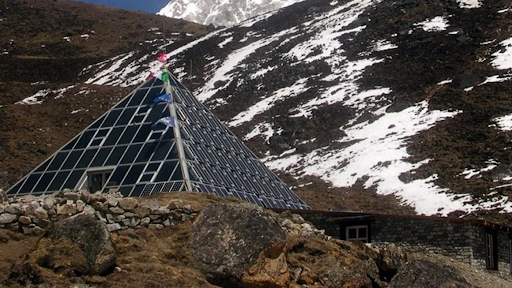In a remarkable twist to our understanding of the global climate crisis, scientists have uncovered a unique cooling phenomenon in the Himalayas, offering a glimmer of hope against the backdrop of rapidly melting glaciers. This unexpected discovery, detailed in a recent study published in Nature Geoscience on December 4, reveals how certain high-altitude ice masses in the world’s tallest mountain range react to warming temperatures by generating robust cold winds. These winds, cascading down the slopes, could be playing a crucial role in slowing down the impact of global warming on these vital ecosystems.
Francesca Pellicciotti, professor of glaciology at the Institute of Science and Technology Austria and the study’s lead author, explains that warming climates create a significant temperature disparity between the air above Himalayan glaciers and the cooler air in contact with the ice masses. “This leads to an increase in turbulent heat exchange at the glacier’s surface and stronger cooling of the surface air mass,” she remarks. The cooler, denser air then sinks and flows down into the valleys, causing a cooling effect in the lower glacier areas and neighbouring ecosystems.
This phenomenon is crucial, considering the Himalayan glaciers feed into 12 rivers, providing fresh water to nearly 2 billion people across 16 countries. However, the sustainability of this self-preserving cooling effect, especially with the anticipated rise in temperatures in the coming decades, remains uncertain.
Fanny Brun, a research scientist at the Institut des Géosciences de l’Environnement, highlights the situation’s urgency. She underscores that rising temperatures primarily cause increased ice losses due to the lengthening and intensification of the melt season. Moreover, the retreat of glaciers leads to deglaciated landscapes that absorb more energy (low albedo effect), further exacerbating the rise in air temperature.
Contrary to expectations, temperature averages at the base of Mount Everest have remained stable, as Franco Salerno, a coauthor of the report, points out. He observes a curious pattern: “While the minimum temperatures have been steadily on the rise, the surface temperature maxima in summer were consistently dropping.” Yet, these cooling winds are insufficient to counteract the broader impacts of climatic warming and fully preserve the glaciers.
The study also highlights the scarcity of data in high-elevation areas, which led the research team to focus on the unique ground observation records at a station in the Himalayas. “The process we highlighted in the paper is potentially of global relevance and may occur on any glacier worldwide where conditions are met,” Pellicciotti asserts.
The Pyramid International Laboratory/Observatory climate station, located at a glacierized elevation of 5,050 meters on Mount Everest, has been instrumental in this research. For nearly 30 years, it has provided detailed meteorological data that helped the researchers conclude that warming temperatures trigger katabatic winds – cold winds created by air flowing downhill, a common feature in the Himalayas but now intensified.
The study opens up new avenues for understanding and mitigating the impacts of global warming on critical ecosystems like the Himalayas. While these glaciers cannot indefinitely preserve themselves against climate change, their ability to locally counteract warming effects could be crucial for the surrounding environment. As the research continues, it emphasizes the need for more multidisciplinary approaches and long-term data collection to comprehensively address the impact of global warming. This revelation about the Himalayas serves as both a warning and a call to action, urging greater efforts to understand and preserve these vital natural treasures.






















+ There are no comments
Add yours